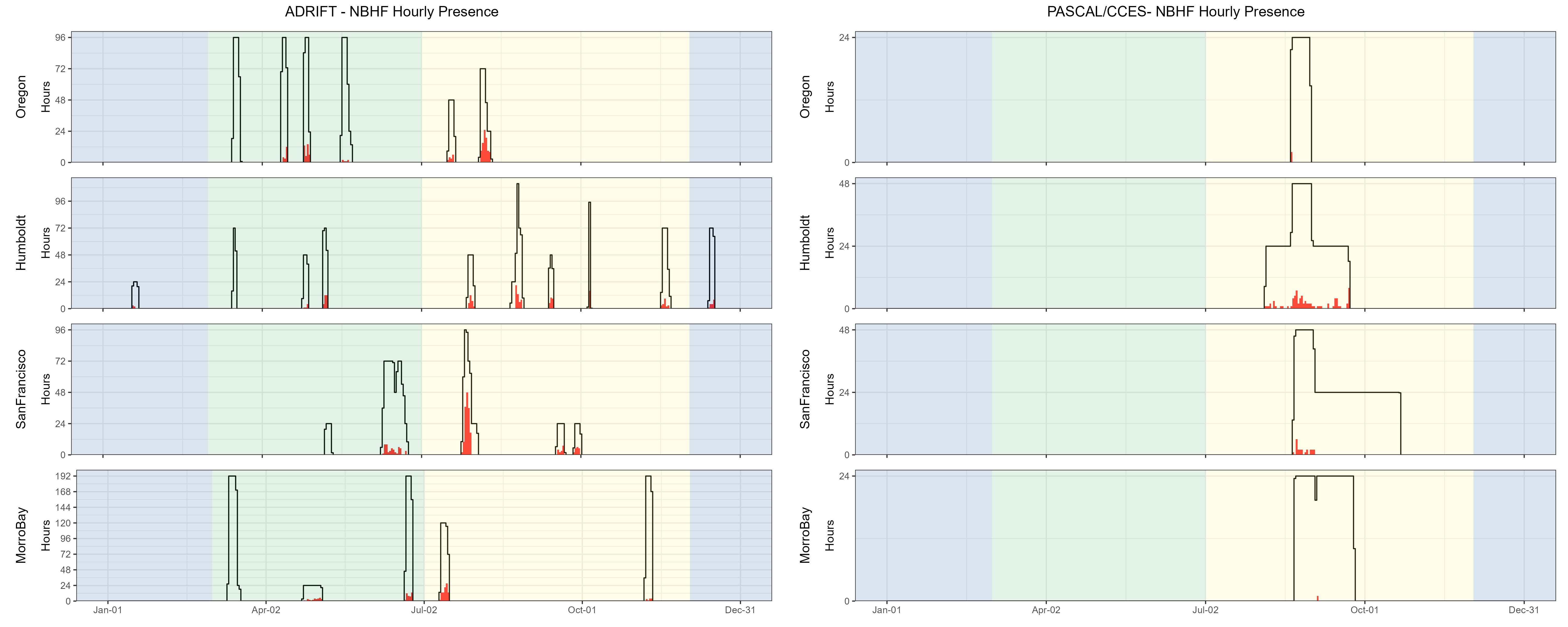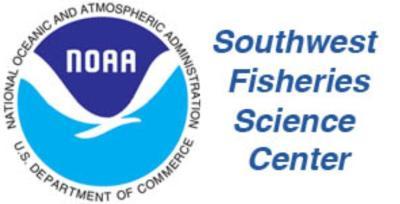| Upwelling | Post-Upwelling | Winter | |
|---|---|---|---|
| Oregon | 0.04 (1430) | 0.20 (493) | – (–) |
| Humboldt | 0.07 (489) | 0.13 (1048) | 0.07 (308) |
| San Francisco | 0.05 (960) | 0.27 (688) | – (–) |
| Morro Bay | 0.03 (2065) | 0.08 (1353) | – (–) |
NBHF species
Calls associated with NBHF species (porpoise and Kogia spp.) were detected in all regions in all seasons (Figure 1), and the hourly probability of detection was higher for the post-upwelling season than for the upwelling season in all regions (see table, right).
Detections were made during most drifts; however, there were no NBHF detected during the April deployments in any region (there was no effort in San Francisco during this month, Figure 1). During the PASCAL and CCES Surveys, most NBHF detections were in the Humboldt region (Figure 1).

The California Current is home to 4 different species that produce NBHF echolocation clicks: harbor porpoise, Dall’s porpoise, pygmy sperm whales, and dwarf sperm whales. Despite the similarities in their echolocation clicks, these species inhabit different habitats and have different behaviors and life histories. Harbor porpoise inhabit the nearshore waters north of Point Conception, and are very sensitive to noise and other anthropogenic impacts. Dall’s porpoise are fast moving and are often found in mixed species aggregations with dolphins. Both the pygmy and dwarf sperm whales are cryptic deep diving species. Lumping these very different species into one ‘acoustic’ group is problematic, and acoustic classification to species (or at least genus) is needed.
Preliminary efforts at developing a genus-level species classifier for NBHF species in the California Current have shown positive results, and future research will further develop this classifier (see NBHF Classification). With some improvement, this classifier can be applied towards existing archived data to improve our understanding of the distribution of these species in the greater California Current.
Detailed methods are provided in our Adrift Analysis Methods.
